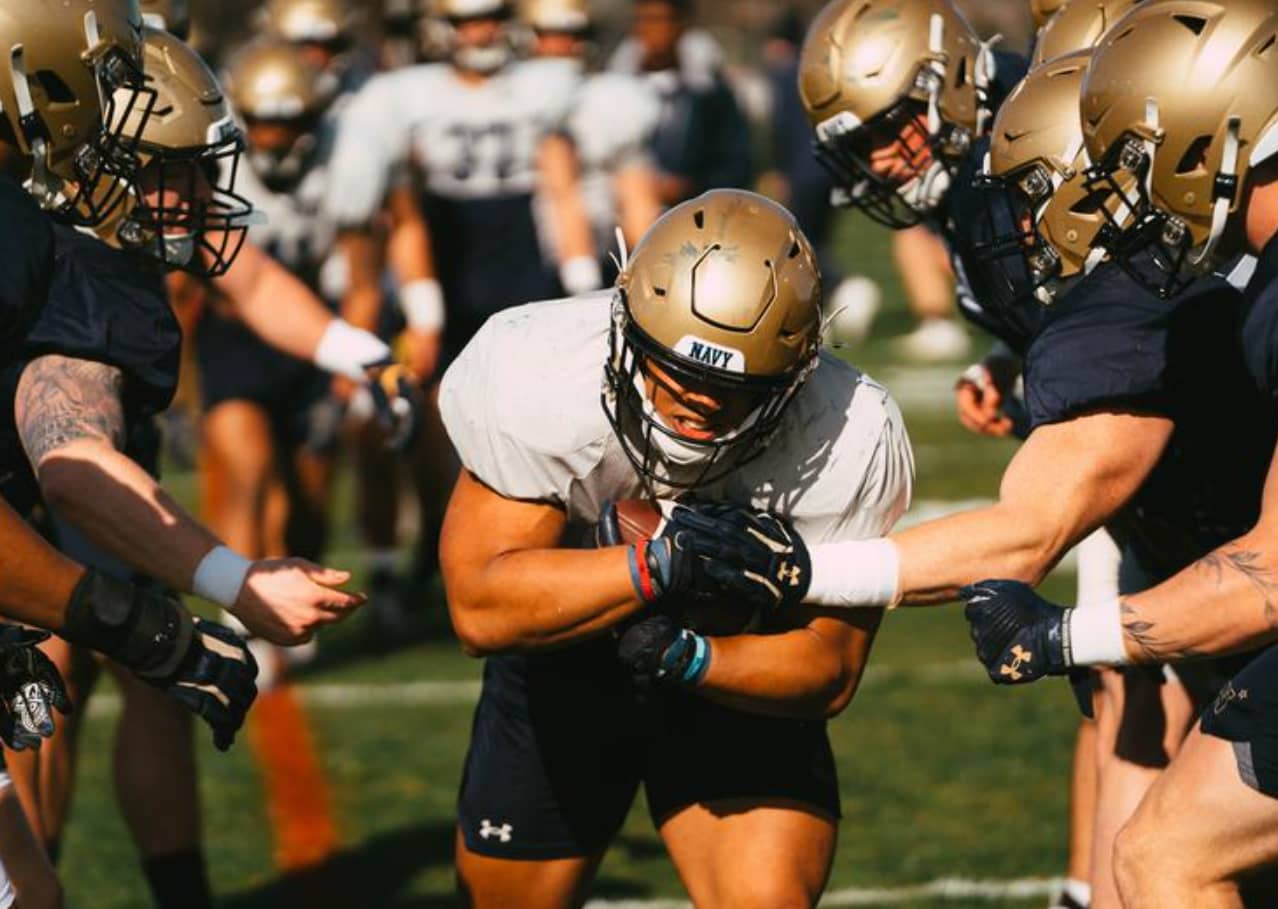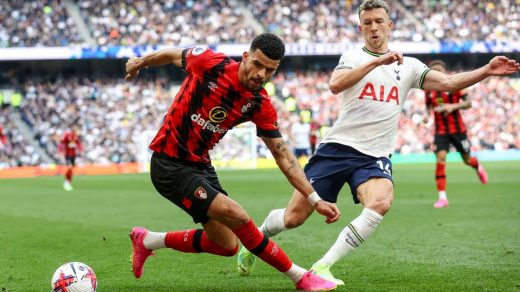The wing t offense stands as one of football’s most ingenious strategic innovations.
Created by the legendary Pop Warner and later perfected by Harold “Tubby” Raymond at Delaware University, this offensive system has revolutionized how teams approach the game, particularly at youth and high school levels.
Unlike many modern offenses that rely heavily on athleticism or pure power, the wing t offense shines through its brilliant combination of deception, timing, and team coordination.
Think of the wing t offense as a sophisticated dance where every player has a crucial role.
It’s not just about having the fastest runners or the strongest blockers – it’s about creating a seamless offensive machine where every movement has a purpose and every fake creates opportunity.
This system has helped countless teams compete successfully against more athletic opponents by emphasizing smart play over raw talent.
For teams looking to implement a system that builds fundamental skills while creating scoring opportunities, the Wing T offense offers a proven solution.
Wing T Offense

Whether you’re a coach seeking to install this system, a player working to master it, or simply a football enthusiast wanting to understand its intricacies, this comprehensive guide will provide you with everything you need to know.
Key Takeaways
Essential Wing T Elements:
Core Principles:
- Based on strategic deception rather than pure power
- Creates multiple offensive threats
- Emphasizes precise timing and execution
- Develops team-first mentality
- Builds strong fundamentals
Implementation Benefits:
- Perfect for teams without dominant athletes
- Excellent teaching platform
- Controls game tempo effectively
- Creates defensive confusion
- Develops complete football players
Wing-T Formation: Complete Analysis
The wing t formation’s effectiveness comes from its unique structure and the various threats it presents to the defense.
Base Formation Components:
Required Personnel:
QB – Quarterback (1)
FB – Fullback (1)
TB – Tailback (1)
WB – Wingback (1)
TE – Tight End (1)
SE – Split End (1)
OL – Offensive Line (5)
Advanced Position Analysis Table:
| Position | Primary Role | Key Skills | Success Metrics | Common Mistakes | Coaching Points |
|---|---|---|---|---|---|
| Quarterback | Ball handling, play fakes | Quick hands, decision making | Fake quality, timing | Poor ball handling | Stay low, sell fakes |
| Fullback | Inside runs, lead blocking | Power, vision, balance | Block completion, yard gain | Hesitation | Hit hole hard, stay low |
| Tailback | Outside runs, receiving | Speed, agility, patience | Yards per carry | Over-running blocks | Follow blocks, read defense |
| Wingback | Misdirection, edge blocking | Versatility, timing | Block effectiveness | Poor path discipline | Maintain spacing, timing |
| Tight End | Blocking, short passes | Strength, hands, footwork | Blocking success rate | Weak-side release | Stay balanced, square |
| Split End | Deep threat, perimeter blocking | Speed, route running | Yards per catch | Lazy blocking | Full-speed routes, engage blocks |
Formation Variations and Adjustments:
Strong Side Organization:
- Tight end and wingback create a power side
- Multiple blocking angles are possible
- Natural running lanes develop
- Built-in misdirection opportunities
- Easy motion integration
Weak Side Structure:
- Split end provides vertical threat
- Creates defensive spacing issues
- Opens cutback lanes
- Enables quick-hitting plays
- Forces defensive adjustments
Famous Wing-T Offenses: Historical Success Stories
Learning from successful implementations provides valuable insights for modern teams.
Professional Level Success:
Kansas City Chiefs Implementation:
- Late 1970s adaptation
- Combined power and deception
- Created unique defensive challenges
- Influenced modern variations
- Proved NFL viability
College Football Excellence:
Delaware Dynasty Details:
- Coach Tubby Raymond’s Innovations
- Multiple formation variations
- Advanced blocking schemes
- Sophisticated play series
- Revolutionary practice methods
- Consistent success metrics
Modern College Adaptations:
- Integration with spread concepts
- Tempo variation implementation
- RPO (Run-Pass Option) additions
- Formation flexibility increases
- Modern defensive countermeasures
High School Implementation Success:
Key Success Factors:
- Emphasizes fundamental development
- Teaches football intelligence
- Builds team cohesion
- Develops multiple skill sets
- Creates competitive advantage
Wing-T Offense Strengths: Maximizing Potential
Understanding system strengths allows for optimal implementation and game planning.
Comprehensive Advantages Table:
| Advantage | Description | Application | Impact | Coaching Focus |
|---|---|---|---|---|
| Misdirection | Multiple fake options | Creates hesitation | Defensive confusion | Timing, execution |
| Ball Control | Extended drives | Time management | Game control | Consistency, patience |
| Multiple Threats | Various running options | Forces base defense | Creates mismatches | Versatility, balance |
| Formation Flexibility | Different looks | Adaptation ability | Hard to prepare for | Installation, practice |
Strategic Benefits Analysis:
Misdirection Elements:
- Counter plays create doubt
- Reverses exploit over-pursuit
- Bootlegs use quarterback mobility
- Play-action passes build off run
- Multiple backfield threats
Control Aspects:
- Time of possession advantage
- Defensive fatigue creation
- Field position management
- Score control capability
- Game tempo manipulation
Wing-T Offense Weaknesses: Problem Solving
Understanding and addressing system limitations improves implementation success.
Primary Challenges:
Execution Requirements:
- Precise timing needed
- Complex ball handling
- Detailed footwork essential
- Extensive practice required
- Chemistry development crucial
Strategic Limitations:
- Vertical passing constraints
- Quick-strike capability
- Comeback situation challenges
- Modern defense adaptations
- Personnel requirements
Implementation Solutions:
Skill Development Focus:
- Regular timing drills
- Ball handling progression
- Footwork fundamentals
- Practice efficiency
- Team building activities
Strategic Adjustments:
- Pass game integration
- Tempo variation
- Formation adaptation
- Personnel packaging
- Situational planning
Running Play: Wing-T 21 Dive Deep Dive
This fundamental play demonstrates core wing t principles in action.
Complete Assignment Breakdown:
Offensive Line Responsibilities:
- Left Tackle: Seal edge, prevent penetration
- Left Guard: Double team nose tackle
- Center: Down block right, secure gap
- Right Guard: Pull and trap linebacker
- Right Tackle: Reach block defensive end
Backfield Execution Details:
- Quarterback: Reverse pivot, execute fake
- Fullback: Lead block through the hole
- Halfback: Hit hole with speed
- Wingback: Seal edge defender
Success Factors Table:
| Element | Key Point | Common Error | Correction | Coaching Cue |
|---|---|---|---|---|
| Timing | Synchronized movement | Early/late execution | Practice tempo | “Count your steps” |
| Fakes | Convincing action | Half-speed fakes | Detail focus | “Sell the fake” |
| Blocking | Sustained contact | Early release | Finish emphasis | “Drive through” |
| Running | Quick hole hit | Hesitation | Decisive cuts | “Hit it hard” |
Passing Play: Wing-T Waggle Left Throwback Mastery
This sophisticated play showcases the formation’s passing potential.
Detailed Route Structure:
Primary Routes:
- Split End: Deep flag route (15-20 yards)
- Tight End: Deep crossing (12-15 yards)
- Wingback: Intermediate post (10-12 yards)
- Fullback: Flat release (3-5 yards)
- Tailback: Wheel route (varies)
Protection Scheme Specifics:
- Guards pull in sequence
- Tackles vertical set
- Center anchors middle
- Backs check protection
- Edge containment priority
Quarterback Reading Progression:
- Deep flag route (primary)
- Crossing route (secondary)
- Post route (tertiary)
- Flat route (check down)
- Wheel route (safety)
Comprehensive Offensive System Comparison
Understanding how the wing t offense relates to other systems provides valuable context.
Detailed Systems Analysis Table:
| System | Core Strength | Main Weakness | Best Level | Personnel Needs | Installation Time |
|---|---|---|---|---|---|
| Wing-T | Misdirection | Complex timing | HS/Small College | Disciplined players | Full offseason |
| Spread | Space creation | Protection issues | College/Pro | Speed athletes | Half season |
| Pro-Style | Versatility | Learning curve | Pro/College | Complete roster | Full season |
| Option | Run dominance | Passing limits | College/HS | Mobile QB | Partial season |
| Air Raid | Passing game | Balance issues | College/Pro | Skilled QB/WR | Half season |
System-Specific Characteristics:
Traditional Power Offense:
- Straightforward execution
- Limited deception needs
- Power-based success
- Simple installation
- Physical dominance required
Modern Spread Concepts:
- Space utilization focus
- Quick-strike capability
- Multiple personnel groups
- Complex read systems
- Athletic demands
Frequently Asked Questions
- Q: How long does it take to fully install the wing t offense?
A: A basic installation typically requires one full offseason, while mastery often takes 2 to 3 seasons. The system’s complexity demands patient teaching and consistent repetition. Focus on installing core plays first, then gradually add complexity.
- Q: What type of players work best in this offense?
A: The wing t offense thrives with smart, disciplined players who prioritize team success over individual statistics. While speed and size help, execution and understanding matter more. Players must be willing to learn and commit to precise execution.
- Q: How effective is the wing t offense against modern defenses?
A: The system remains highly effective when properly executed. Its principles of misdirection and multiple threats continue to challenge any defense. Modern adaptations have kept the system relevant and successful at all levels of competition.
- Q: What makes the wing t offense different from other running offenses?
A: The Wing T offense emphasizes deception and timing over pure power. It uses multiple backfield threats and precise execution to create defensive confusion rather than relying solely on physical dominance.
- Q: How adaptable is the wing t offense to different skill levels?
A: The system is highly adaptable and can be simplified for youth levels or made more complex for advanced teams. Its fundamental principles work at any level, making it an excellent teaching tool for developing football knowledge and skills.
Also Check:
Conclusion:
The wing t offense represents a masterful approach to football that emphasizes teamwork, execution, and strategic thinking over raw athletic ability.
Its enduring success across different levels of competition proves that fundamentally sound football never goes out of style.
For coaches considering this system, success comes from:
- Commitment to teaching details
- Developing player understanding
- Building disciplined execution
- Creating team chemistry
- Maintaining system integrity
Players must embrace their roles within the larger system and trust that their responsibilities contribute to team success.
The beauty of the wing t offense lies in its ability to make the whole greater than the sum of its parts.
When properly executed, this offense demonstrates that strategic thinking and teamwork can overcome seemingly superior athletic ability.
Whether you’re implementing the system or defending against it, understanding the wing t offense enriches your appreciation for football’s tactical depth and the enduring value of well-designed offensive systems.
The ultimate key to success with the wing t offense is patience and commitment. Rome wasn’t built in a day, and neither is a successful wing t program.
But for teams willing to put in the work, master the details, and commit to excellence, this time-tested system continues to provide a path to victory on the football field.



